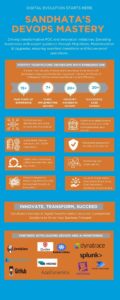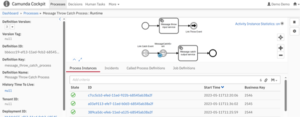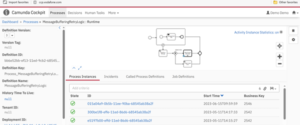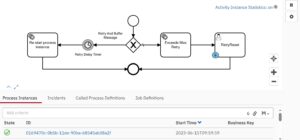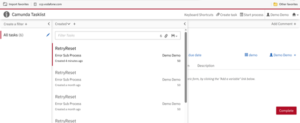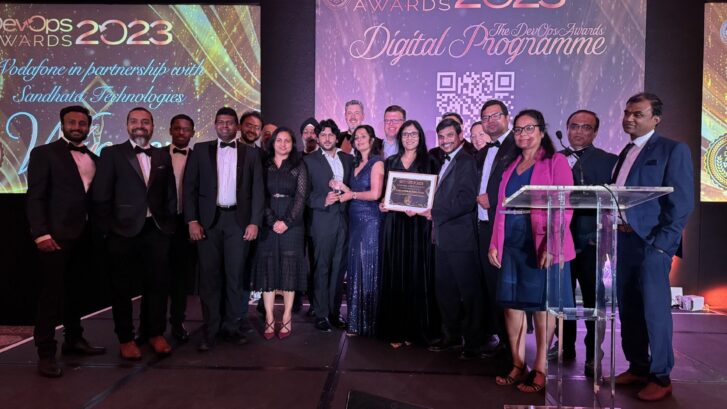
Sandhata Triumphs Globally at DevOps Awards 2023: A Resounding Victory Among Industry Leaders
Sandhata Technologies and Vodafone have recently clinched a Triple Crown victory at the prestigious DevOps Awards 2023, marking a significant achievement that validates our unwavering commitment to excellence in the DevOps domain.
DevOps Awards 2023
The DevOps Awards 2023 event, a distinguished gathering in the technology industry, took place at London on 25 October.
This prestigious event served as a platform to recognize and celebrate exemplary achievements in the realm of DevOps, bringing together leading organizations and professionals dedicated to advancing innovation, collaboration, and excellence in the field.
In the fiercely competitive global landscape, Sandhata Technologies emerged as the unrivalled victor at the DevOps Awards 2023, surpassing formidable contenders on a global scale. Amidst stiff competition from industry leaders, our triumphant win of three prestigious awards underscores the magnitude of our achievements.
Navigating through a field of distinguished competitors, the recognition as the “Best DevOps Team of the Year,” “Best Use of DevOps Technology,” and “Best Cultural Transformation” solidifies Sandhata’s position as a trailblazer in the DevOps domain. This victory isn’t just an accolade; it signifies our ability to stand out and excel amidst the best in the industry.
The global nature of this competition, with participation from prominent leaders, magnifies the significance of our triumph. Winning three awards amidst such formidable contenders is a testament to our unwavering commitment to excellence, innovation, and transformative cultural practices.
This achievement not only positions Sandhata Technologies as a global force in DevOps but also highlights our dedication to setting new benchmarks and leading the way in the ever-evolving landscape of technology and innovation.
Categories Won
The recent DevOps Awards 2023 witnessed Sandhata Technologies and Vodafone securing three prominent accolades:
Best DevOps Team of the Year: Sandhata Technologies emerged as the Best DevOps Team of the Year, underscoring our dedication to innovative practices and collaborative work.
Best Use of DevOps Technology: Our strategic implementation of technology positioned us as leaders in the effective utilization of DevOps tools and methodologies.
Best Cultural Transformation: Recognizing the transformation in our workplace culture, fostering an environment conducive to groundbreaking ideas and innovation.
Following the conclusion of the DevOps Awards 2023 event, Sandhata Technologies and Vodafone achieved a triple win, representing a significant milestone. Our forward-looking commitment is focused on raising industry benchmarks and driving advancements in the continually evolving DevOps landscape.
For organizations interested in leveraging our expertise or exploring collaborative opportunities, we invite you to connect with us.

We Are Sandhata – Meet Maitreya
Maitreya Gavkare, Agile consultant, shares a bit about his background, why he decided to move into the IT sector, and how it’s going so far!
Tell us about your role at Sandhata
I am working as an Agile consultant, primarily facilitating practical improvement initiatives and strategies for clients. To do this, I analyse and evaluate the organisation’s workflow and overall environment, discussing organisational shortcomings with clients, with the end goal of improving how they deliver customer value.

Why is feedback fantastic?
So, you have a crack team delivering sterling work, who are highly skilled and hard working. But this team are not as productive as is hoped, and they frequently face production/service issues which take a lot of time to resolve. What gives?
Quite possibly, the team is delivering the wrong stuff (which does not improve the customer experience), or fire fighting issues blind because they don’t have the right information at the right time. Without regular feedback, projects can go off course, the wrong features can be built, and sometimes the wrong issue can be “fixed”!

Digital Disruption
Digital Transformation is a revolutionary change in any industry or business which transforms it or creates a new type of industry completely. Digital disruption refers to the impact of new digital technologies and business models on existing goods, services, systems, and structures.
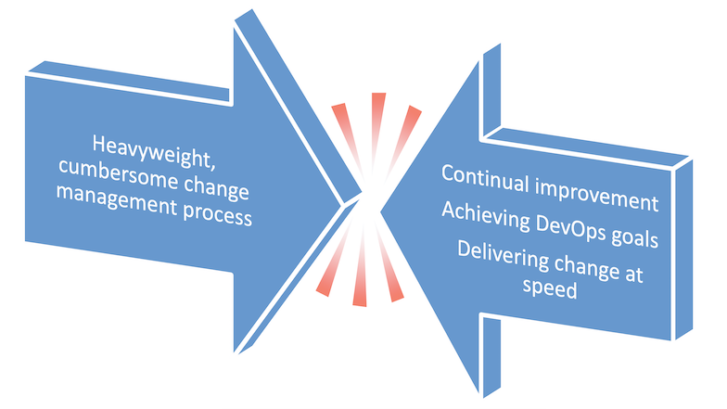
Is your Change Management Process holding you back? We can help
Are your projects failing to deliver the value you expected?
Are you unable to release changes as fast as you would like?
Are your teams stuck behind heavyweight processes slowing them down?
Is change expensive due to clunky, inefficient change management?
Our experience with a wide variety of clients has shown us that a heavyweight, cumbersome change management is one of the biggest blockers to achieving your DevOps goals and delivering change at the speed you need.

Sandhata wins Best Overall Testing Project at TESTA 2018
The DevOps, Integration and IT transformation specialist, Sandhata is delighted to announce its joint entry with RBS won ‘Best Overall Testing Project – Finance’ at The European Software Testing Awards 2018.
Now in its sixth year, The European Software Testing Awards (TESTA) celebrates companies and individuals who have accomplished significant achievements in the software testing and quality assurance market.
Sandhata, in partnership with Royal Bank of Scotland, has been recognised by TESTA for its innovative testing project ‘Accelerating Mainframe Change’ delivered by the RBS engineering team and Sandhata.

Does DevOps Work in Highly Regulated Industries?
DevOps is best suited to digital start-ups with minimal regulation and few restrictions, right?
Initially the DevOps movement stemmed from the agile, innovative, born-on-the-web companies who were able to change their way of working quickly. However, the principles and practices are completely transferrable to all organisation types. This includes those at the other end of the spectrum – where processes are very tightly controlled and regulation dictates a significant part of the business investment.

